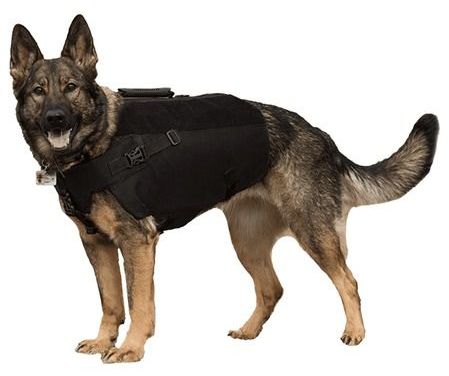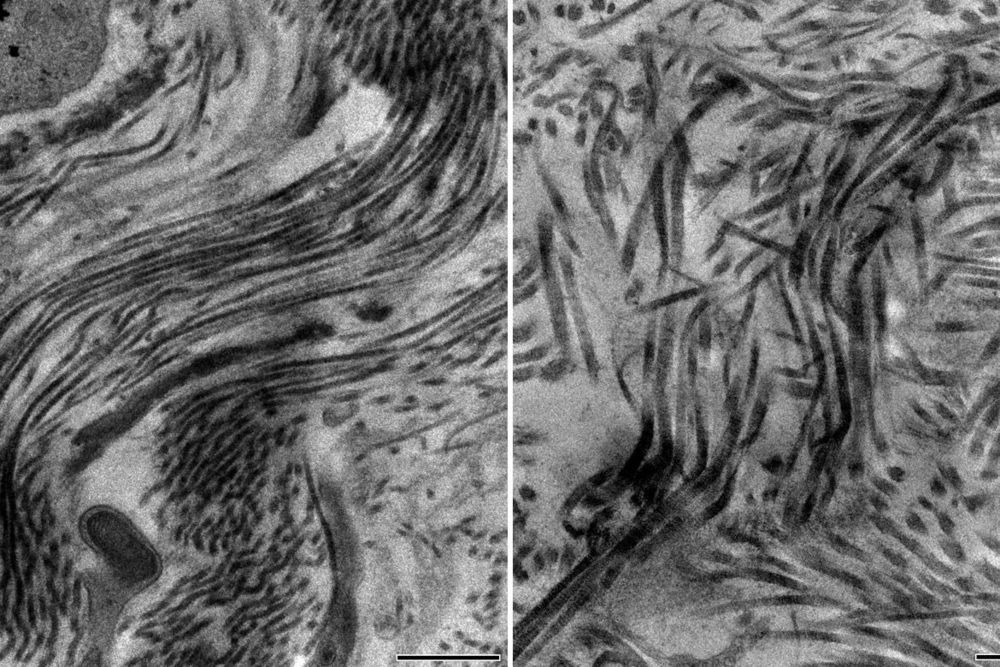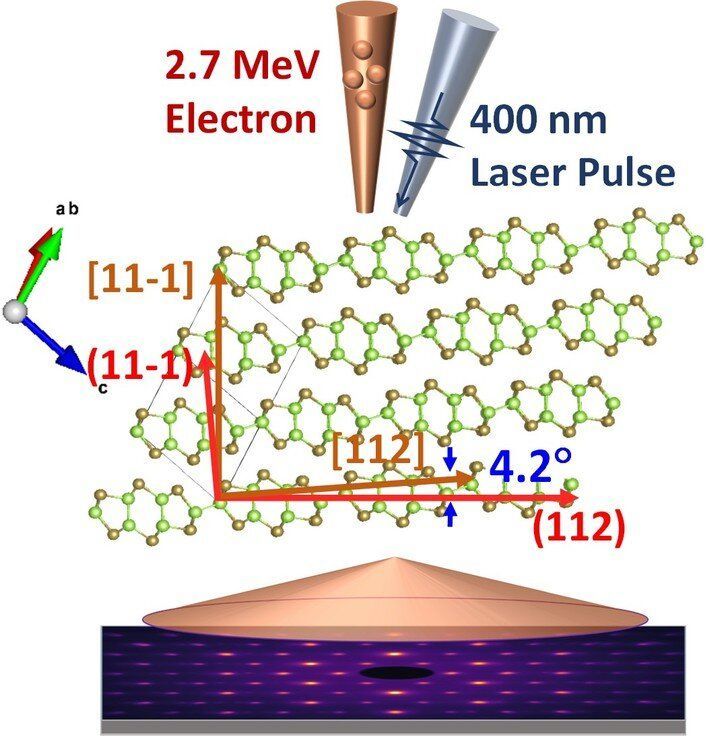Our K-9 Shadow Vest keeps man’s best friend safe from harm while in the line of duty. Utilizing the latest DuPont™ Kevlar® technologies, the NIJ IIIA ballistic panels in this vest are lightweight, durable, and provide the highest level of bulletproof protection available in soft body armor. This vest is guaranteed to provide maximum coverage of the dog’s vital organs, including the sides, chest, abdomen, and back. Designed with agility and mobility in mind, the Shadow K9 Vest provides optimal comfort, without hindering performance. The customizable buckles and reinforced Velcro adjustment points ensure that the vest will fit securely and properly. Once fitted, only one discrete zipper is needed for quicker donning and doffing.
Page 6286
Jul 6, 2020
Samsung discovers new material that could revolutionize semiconductors
Posted by Quinn Sena in categories: computing, mobile phones, particle physics
Samsung’s latest scientific breakthrough might change the very way we perceive semiconductors, largely on account of the fact it’s two-dimensional. Called amorphous boron nitride (a-BN), the substance in question is composed of but a single layer of atoms and characterized by an amorphous (liquid-like) molecule structure. It’s also the best 2D material for insulation ever synthetized, with Samsung hoping it will be able to utilize in production of revolutionary graphene wafers with unprecedentedly low level of electrical interference.
The discovery of a-BN is hardly Samsung’s first foray into 2D materials. The first and possibly most famous such substance — graphene — has been the subject of countless projects at the Korean conglomerate ever since it was first isolated in 2004. Following the 2016 Galaxy Note 7 fiasco, Samsung is believed to have doubled down on graphene R&D with the goal of eventually integrating the 2D material into its batteries, making them more stable, i.e. less prone to spontaneous combustions.
Making graphene batteries is no small feat, however, and it’s been a while since Samsung last made significant inroads on that front. Scalability remains a key issue, particularly in regards to mass-production costs. Graphene wafers, on the other hand, are expected to play a major role in the development and volume production of next-generation server memory modules, as well as DRAM and NAND memory chips.
Jul 6, 2020
China ‘pulling back troops’ after deadly border clash: India
Posted by Quinn Sena in category: futurism
Beijing says both sides taking effective measures to ease border tensions after skirmish that killed 20 Indian troops.
Jul 6, 2020
How Processing Changes Strawberries’ Health Benefits
Posted by Genevieve Klien in category: health
Processing can alter the health benefits of strawberries. Consumer Reports’ experts help you make sure you’re choosing the healthiest products.
Jul 6, 2020
How the body regulates scar tissue growth after heart attacks
Posted by Kevin Huang in categories: biotech/medical, life extension
Very interesting.
New UCLA research conducted in mice could explain why some people suffer more extensive scarring than others after a heart attack. The study, published in the journal Cell, reveals that a protein known as type 5 collagen plays a critical role in regulating the size of scar tissue in the heart.
Once formed, heart scar tissue remains for life, reducing the heart’s ability to pump blood and adding strain to the remaining heart muscle. People who develop larger scars have a higher risk of heart rhythm problems, heart failure and sudden cardiac death.
Continue reading “How the body regulates scar tissue growth after heart attacks” »
Jul 6, 2020
U.S. autonomous freight network planned for 2023–2024
Posted by Future Timeline in categories: robotics/AI, transportation
TuSimple, a trucking technology company, has announced a plan for the world’s first Autonomous Freight Network (AFN) – an ecosystem consisting of autonomous trucks, digital mapped routes, strategically placed terminals, and TuSimple Connect, a proprietary autonomous operations monitoring system.
Collectively, these components will work together to create the safest and most efficient way to bring self-driving trucks to market. Partnering with TuSimple in the launch of the Autonomous Freight Network are UPS, Penske Truck Leasing, U.S. Xpress (who operate one of the largest carrier fleets in the country) and McLane, a Berkshire Hathaway company and one of the largest supply chain services leaders in the United States.
“Our ultimate goal is to have a nationwide transportation network, consisting of mapped routes connecting hundreds of terminals to enable efficient, low-cost, long-haul autonomous freight operations,” said Cheng Lu, President of TuSimple. “By launching the AFN with our strategic partners, we will be able to quickly scale operations and expand autonomous shipping lanes to provide users access to autonomous capacity anywhere and 24/7 on-demand.”
Jul 6, 2020
Color Changing Apparels, Photochromic Dyes, Chameleon Clothing, Conventional Printing Methods, Fibre2fashion
Posted by Quinn Sena in category: futurism
Color Changing Apparels with Photochromic Dyes Creating Dramatic Effect under Sunlight by Absorbing Ultraviolet Radiation Which Is Applied By Printing & Spraying Methods. Clothes Changes Color According To Environment. Making A New Fashion Statement In Apparel Industry.
Jul 6, 2020
A ‘breath of nothing’ provides a new perspective on superconductivity
Posted by Quinn Sena in categories: particle physics, quantum physics
Zero electrical resistance at room temperature? A material with this property, i.e. a room temperature superconductor, could revolutionize power distribution. But so far, the origin of superconductivity at high temperature is only incompletely understood. Scientists from Universität Hamburg and the Cluster of Excellence “CUI: Advanced Imaging of Matter” have succeeded in observing strong evidence of superfluidity in a central model system, a two-dimensional gas cloud for the first time. The scientists report on their experiments in the journal Science, which allow to investigate key issues of high-temperature superconductivity in a very well-controlled model system.
There are things that aren’t supposed to happen. For example, water cannot flow from one glass to another through the glass wall. Surprisingly, quantum mechanics allows this, provided the barrier between the two liquids is thin enough. Due to the quantum mechanical tunneling effect, particles can penetrate the barrier, even if the barrier is higher than the level of the liquids. Even more remarkably, this current can even flow when the level on both sides is the same or the current must flow slightly uphill. For this, however, the fluids on both sides must be superfluids, i.e. they must be able to flow around obstacles without friction.
This striking phenomenon was predicted by Brian Josephson during his doctoral thesis, and it is of such fundamental importance that he was awarded the Nobel Prize for it. The current is driven only by the wave nature of the superfluids and can, among other things, ensure that the superfluid begins to oscillate back and forth between the two sides—a phenomenon known as Josephson oscillations.
Jul 6, 2020
Graphene barrier creates mosquito-proof fabric
Posted by Quinn Sena in categories: biotech/medical, chemistry
(Credit: Getty Images)
According to the study in PNAS, the ultra-thin yet strong material acts as a barrier that mosquitoes can’t bite through. The graphene also blocks chemical signals mosquitoes use to sense that a blood meal is near, blunting their urge to bite in the first place.
Jul 6, 2020
New insights into van der Waals materials found
Posted by Quinn Sena in categories: materials, particle physics
Layered van der Waals materials are of high interest for electronic and photonic applications, according to researchers at Penn State and SLAC National Accelerator Laboratory, in California, who provide new insights into the interactions of layered materials with laser and electron beams.
Two-dimensional van der Waals materials are composed of strongly bonded layers of molecules with weak bonding between the layers.
The researchers used a combination of ultrafast pulses of laser light that excite the atoms in a material lattice of gallium telluride, followed by exposing the lattice to an ultrafast pulse of an electron beam. This shows the lattice vibrations in real time using electron diffraction and could lead to a better understanding of these materials.

















